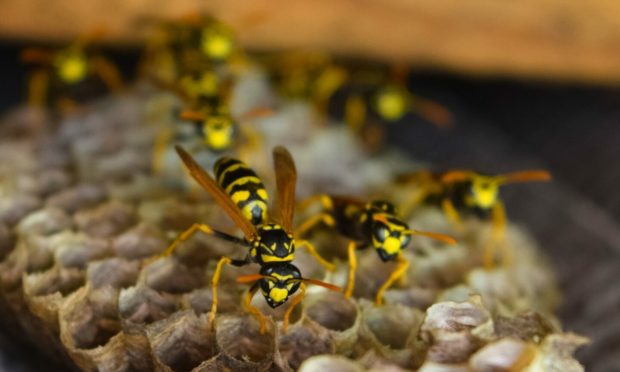An Aberdeen primary school was forced to close after an infestation of wasps was discovered in the building.
Parents were notified that Kirkhill School in Aberdeen was to be closed for the full day following the discovery in the building on Thursday.
The primary school in Kincorth remained partially closed on Thursday while pest control dealt with the infestation.
The school has reopened its doors today (Friday).
A spokeswoman from Aberdeen City Council explained that due to the nature of the building and the extent of the infestation it could not be dealt with safely with staff and pupils in the building.
They added that pest control advised the school remain closed for all of Thursday.
The Early Learning and Childcare nursery was able to remain open because it is in a new separate building.
Inconsistent weather this year could lead to surge of wasps
Wasp season usually peaks in July and August. It is thought that the inconsistent weather during summer has led to an influx of wasps.
Aviva warned that the inconsistent weather so far this year could lead to a surge in wasp problems in July and August.
The pest control service reported that inconsistent weather in June 2021 led to a fall in wasp-related inquiries – suggesting the numbers could shoot up in July and August.
Sarah Applegate, head of risk for Aviva General Insurance, said: “Wasp season typically begins around the end of June and peaks throughout July and August.”
Aviva’s tips for identifying and preventing problems with wasps
– It is normal to see the odd wasp entering a home during the summer months, but larger numbers or a swarm indicate there is likely to be a nest somewhere nearby.
– To find the nest location, carefully watch the flight path of the returning wasps to your property, garden, garage or shed. This is much easier to see in the warmer summer months as the wasps will be far more active.
– Wasps buzz very loudly when building their nests. Often you will be able to hear signs of activity. If you are unable to see a nest, continuous loud buzzing would suggest a hidden wasp nest is on the property or in the loft.
– A wasps’ nest is usually brown or grey in colour and can resemble a rugby ball or swirled balloon. The swirls are visible on the outside of the nest and an entry point can usually be seen on the bottom of the nest.
– To help prevent wasps nesting, carry out regular property checks to ensure all cracks and crevices on the property are sealed. Ensure all external rubbish bins have securely fitted lids and compost heaps are emptied as regularly as possible.
